Whether you use your ATV for off-road entertainment or as a workhorse around the farm, the addition of an ATV winch to your vehicle can be extremely useful. Understanding how to choose the correct system for your ATV will ensure confidence in your purchase.
What are the uses of an ATV winching system?
Winching systems can serve a variety of uses. Common uses in the working environment include raising and lowering ATV accessories, such as snow plow blades, or rescuing livestock and machinery from the muck and mire often found in the field. Leisure time uses might include adding the ability to safely climb steeper inclines or loading equipment onto trailers.
How does an ATV winching system work?
Winching systems work by using a rotating spindle. As the axle is rotated, the cable extends or retracts depending upon the direction of rotation. By mounting the system to an ATV, a firmly weighted surface can be provided to further enhance the systems center of gravity and pulling ability by setting the brake. This allows the operator to pull or drag heavy items back towards the systems mounting point as the line is retracted. Alternatively, the winch rope can be attached to a solid surface, such as a tree trunk or stone outcropping, and then retracted, thus using the systems motor to pull the vehicle on which it is mounted, towards the secured end of the rope.
What kinds of ATV winches are available?
Winching systems for ATV use come in a variety of sizes and styles to serve different purposes. Light-duty hand-cranked styles, which usually feature synthetic or wire rope, are suitable for tasks such as dragging small loads across short distances or assisting with loading light equipment into trailers. Heavier, automatic types, which utilize electric permanent magnet motors and braided steel cables, are capable of pulling much heavier loads and are commonly equipped with accessories that make their use easier and safer. Some of the common manufacturer names include Polaris, Kolpin, and SuperWinch.
Some of the common manufacturer names include Polaris, Kolpin, and SuperWinch.
How do you choose an ATV winching system?
While all winches serve the same basic functions, there are many differences in play that can totally alter your experience and how useful a given system will be in your situation. It is vital to understand how these differences affect your choices.
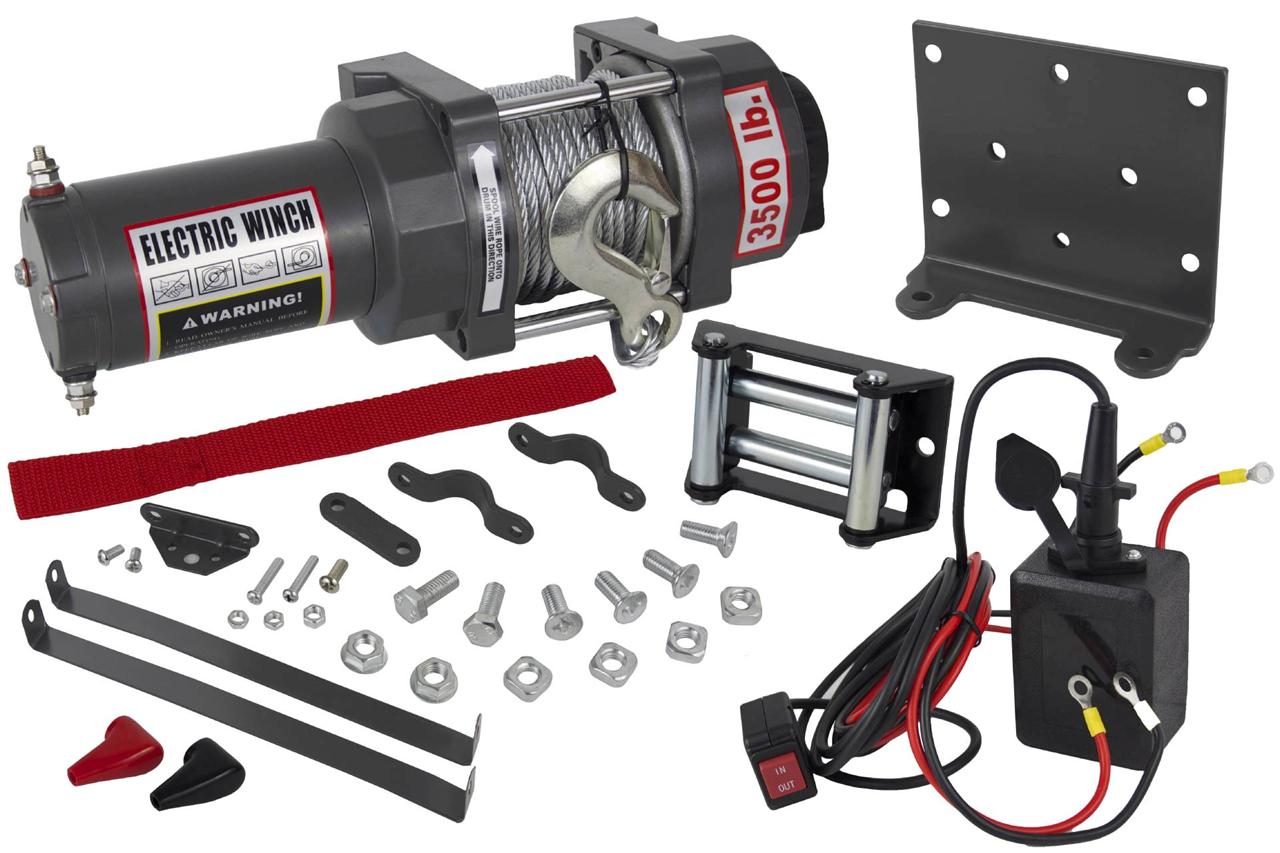
We think of off-roading and we see adventure and power, but sometimes all that fun lands us stuck in the mud. Until we get out, the fun's over. For all of these situations, you need an ATV winch. Read this post to learn how to choose an ATV winch so it gets the job done.
It is tempting to just decide on the bigger, the better and grab the mightiest winch there is, but it could be unnecessary expense and potentially dangerous.
The ATV winch needs to be strong enough for any situation your ATV or UTV is likely to encounter.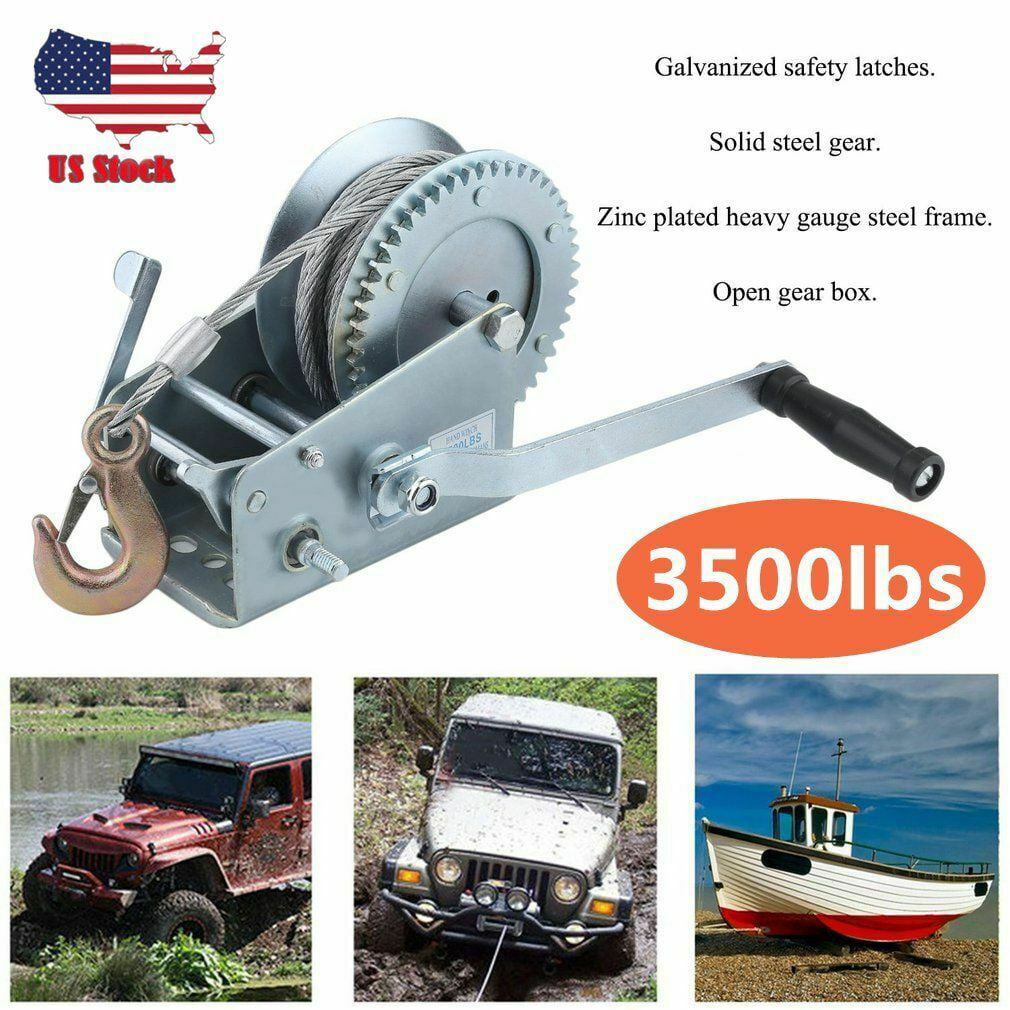 If not, you could find yourself stuck in your stuck situation. You also need to make sure it isn't so heavy that it slows you down or throws your vehicle's balance off, making an accident more likely.
If not, you could find yourself stuck in your stuck situation. You also need to make sure it isn't so heavy that it slows you down or throws your vehicle's balance off, making an accident more likely.
The rated line pull tells you how much the winch can pull. To determine how much pull you need, you need to figure your ATV's weight and the situations you expect to be using the winch for. For instance, if you intend to collect firewood, you won't need as powerful a winch as you will to get unstuck fr om the mud. The suction of the mud creates resistance that requires significantly more power to free the ATV than just what is required to pull the ATV's weight.
If you know your gross vehicle weight rating (it's usually in the owner's manual) or have calculated the vehicle's weight, you can multiply its weight by 1.5 to get the minimum pull capacity needed for your ATV. This means the minimum strength needed to just move the ATV.
Generally:
If you've added aftermarket accessories to your ATV, they could impact the weight enough to make you need a larger winch. Factor that in too.
ATV are the core piece of riding gear for off-road riders
Find out the best look for you
You will be choosing between steel and synthetic cable. Neither is automatically better than the other. They both have unique strengths and weaknesses.
Steel cables are made of aircraft-grade steel and are more indestructible, requiring less maintenance and taking a lot of heat, which is beneficial for faster winches. The problem is that steel cable does endure some wear and can leave splinters in your skin and they can injure people and damage vehicles if the cable snaps while under load.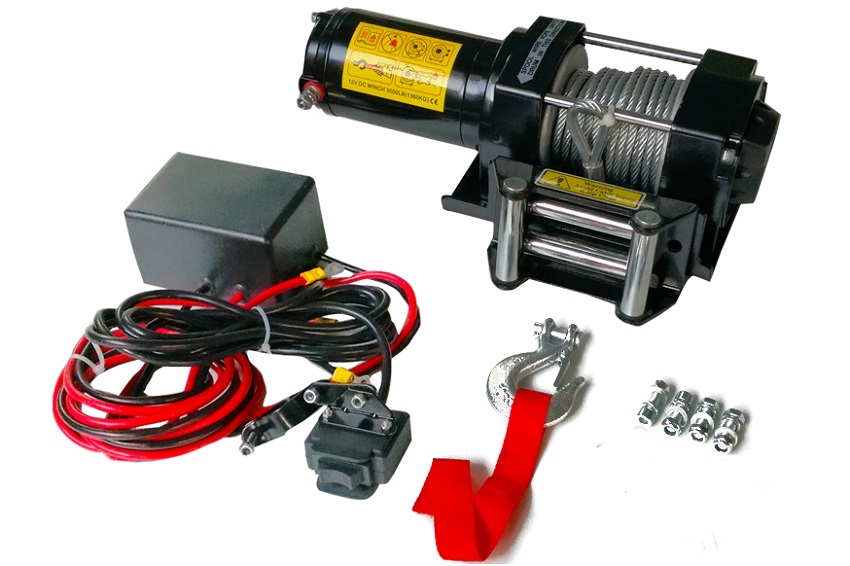 You can wear gloves to prevent damage to your skin.
You can wear gloves to prevent damage to your skin.
Synthetic cable is actually stronger than steel in the pulling department while also being lighter, reducing winch weight. it is also safer should it snap. The downside is that it requires more maintenance and can't take as much heat, so it might serve you better in slower winches. It is also more likely to be damaged in rough terrain.
Synthetic cable is a great choice for most winching needs, particularly those who will be frequent winch users. Steel is a better choice for emergency winch use or for utility uses like moving logs or hay or plowing snow.
If you see these terms on a winch you're buying, they describe the gear train in the winch.
Planetary has multiple gears and pulls faster, but it produces more heat which can damage synthetic cables.
Worm has two gears, pulling slower but producing less heat.
Integrated solenoids are built into the winch for greater durability, but they also take up more room, potentially impacting whether you can fit the winch on your machine.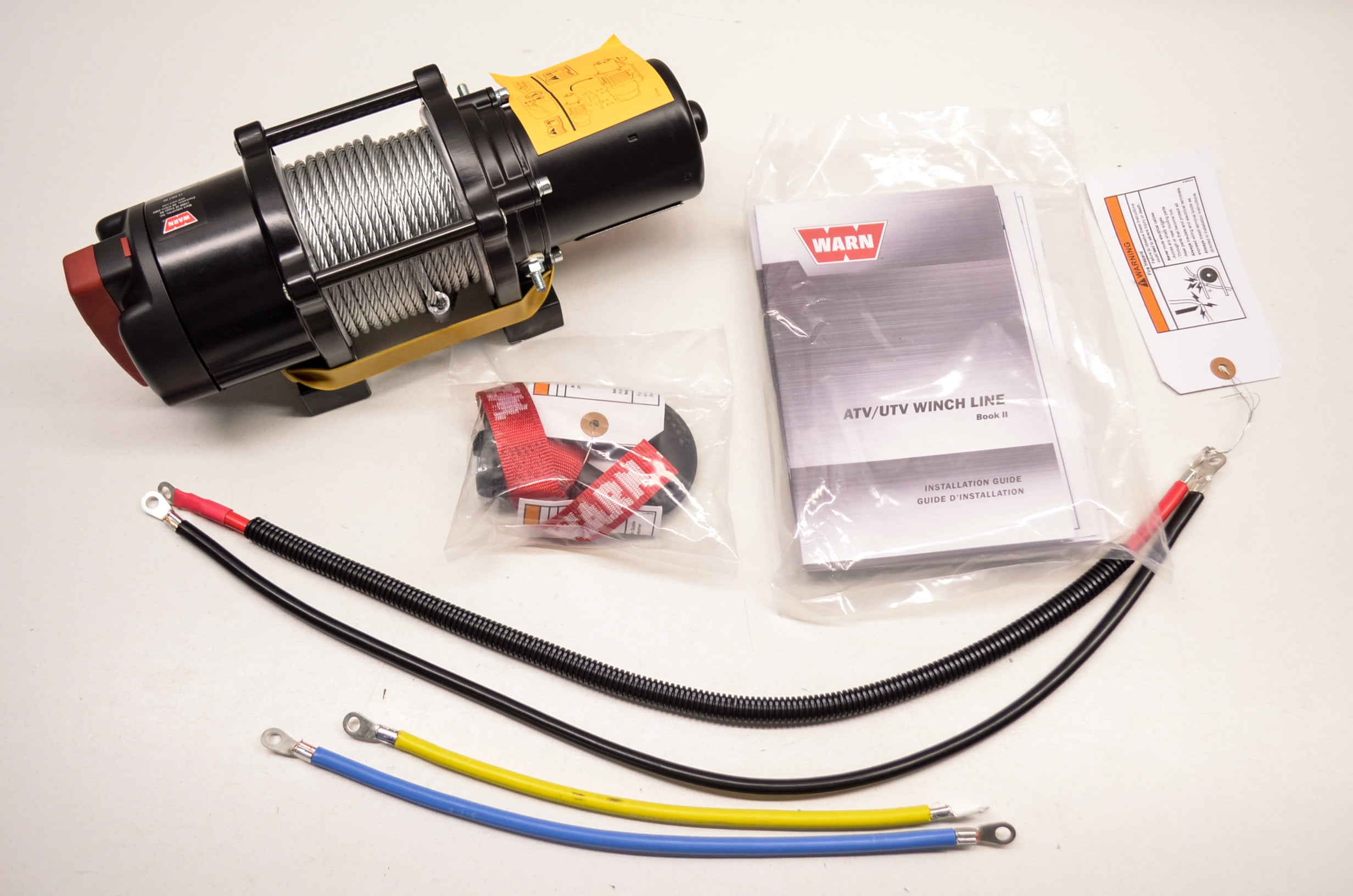
Remote solenoids are separate fr om the winch itself and provide flexible placement options. This is the most popular choice.
Will you potentially be using your winch to help a member of your ATV group get unstuck? You might need to get a winch a little stronger than what you need for your ATV to accommodate their rides too.
An easy to forget but all too important part of buying a winch is whether it will physically fit on your ATV. The best winch in the world won't do you much good if you can't install it on your machine. Determine wh ere you'll be placing the winch on your ATV and take measurements, then check the specifications on any winch you're considering.
HIT
ENDURO LIGHT Graphite
the most durable
458 EUR
HIT
ENDURO Camogrey
the most durable
657 EUR
ENDURO Graphite
the most durable
279 EUR
HIT
ENDURO Graphite
the most durable
657 EUR
-28%
AQUAMASTER-ZIP LIGHT Camogrey
with central zipper
598 EUR
430. 40 EUR
40 EUR
HIT
ENDURO LIGHT Camogrey
the most durable
458 EUR
-12%
AQUAMASTER LIGHT Red
reliability & comfort
438 EUR
386.20 EUR
NEODRY Black
17 EUR
11.90 EUR
ENDURO Camogrey
the most durable
279 EUR
AQUAMASTER Blue
reliability & comfort
647 EUR
-20%
HIT
AQUAMASTER Red
reliability & comfort
259 EUR
207.20 EUR
-40%
HIT
AQUAMASTER Orange
reliability & comfort
259 EUR
155.40 EUR
AQUAMASTER Red
reliability & comfort
677 EUR
BELT
9 EUR
ENDURO BF Camogrey
bootfoot waders
528 EUR
ALL SEASON Black
69 EUR
ENDURO BF Camogrey
bootfoot waders
329 EUR
MUDWAY Graphite
179 EUR
MUDWAY Camogrey
179 EUR
NEOSENSOR Camoarmy
12 EUR
8. 40 EUR
40 EUR
Explore all
For extreme off-road ATV riders, an electric winch is a real lifesaver when stuck in potholes and mud. The electric winch is very easy to install and operate, it is controlled by a remote control, which is installed on the steering wheel of the ATV. Most importantly, such a winch will not require much physical effort from you to pull out the ATV. It has an electric motor powered by a battery. When choosing, you need to proceed from engine power and tractive effort. It is recommended to choose a winch with a pulling force of 1.5-2 times the weight of the ATV. And how to install, connect and use it, we will tell in this article.
Electric winch is a drum with an electric motor. To connect it to the battery, the kit includes an electric unit and a set of wires, with the help of which the battery and the winch are connected. The control panel can be wireless and wired, which is also connected to the unit.
To mount the winch to the ATV, you need a platform, brackets, bolts and clamps. The kit also includes a roller lip, and a cable complete with a hook may also be included.
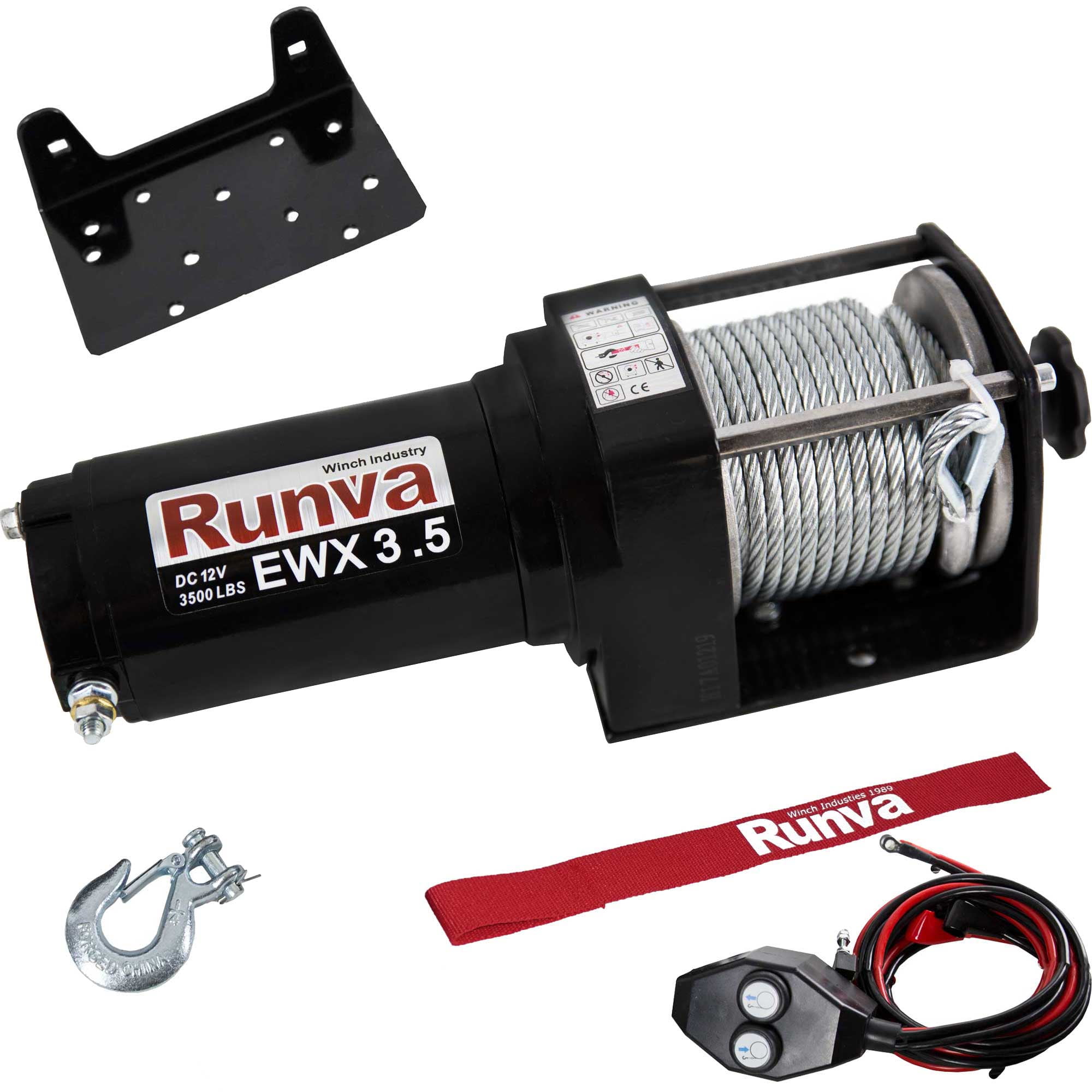 We stretch the nuts one by one, avoiding distortions.
We stretch the nuts one by one, avoiding distortions. The electrical box is recommended to be installed slightly away from the winch, but most often it is installed on the platform. Next, we connect the power cables in accordance with the connection diagram specified by the manufacturer in the product data sheet.
We connect the control panel and install it on the ATV steering wheel. It is recommended to pull the wires tightly, excluding their friction with other parts. They also need to be protected with cable corrugations.
Next, we fix the roller lip to the platform using bolts. And you can assemble all parts of the ATV back.
Once you've installed your electric winch, it's worth testing it out on level ground before driving it off-road. Using a winch requires certain knowledge and compliance with safety rules.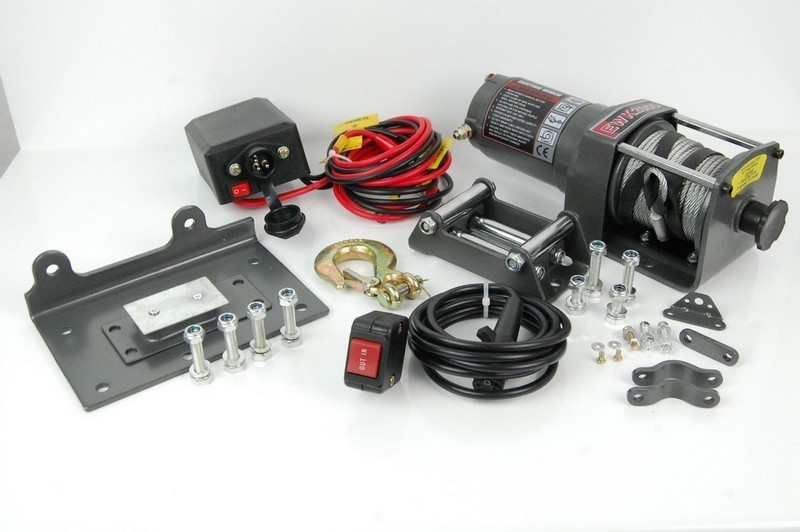 Below, we will tell you what you need to know when pulling an ATV out of a hole or mud with a winch.
Below, we will tell you what you need to know when pulling an ATV out of a hole or mud with a winch.
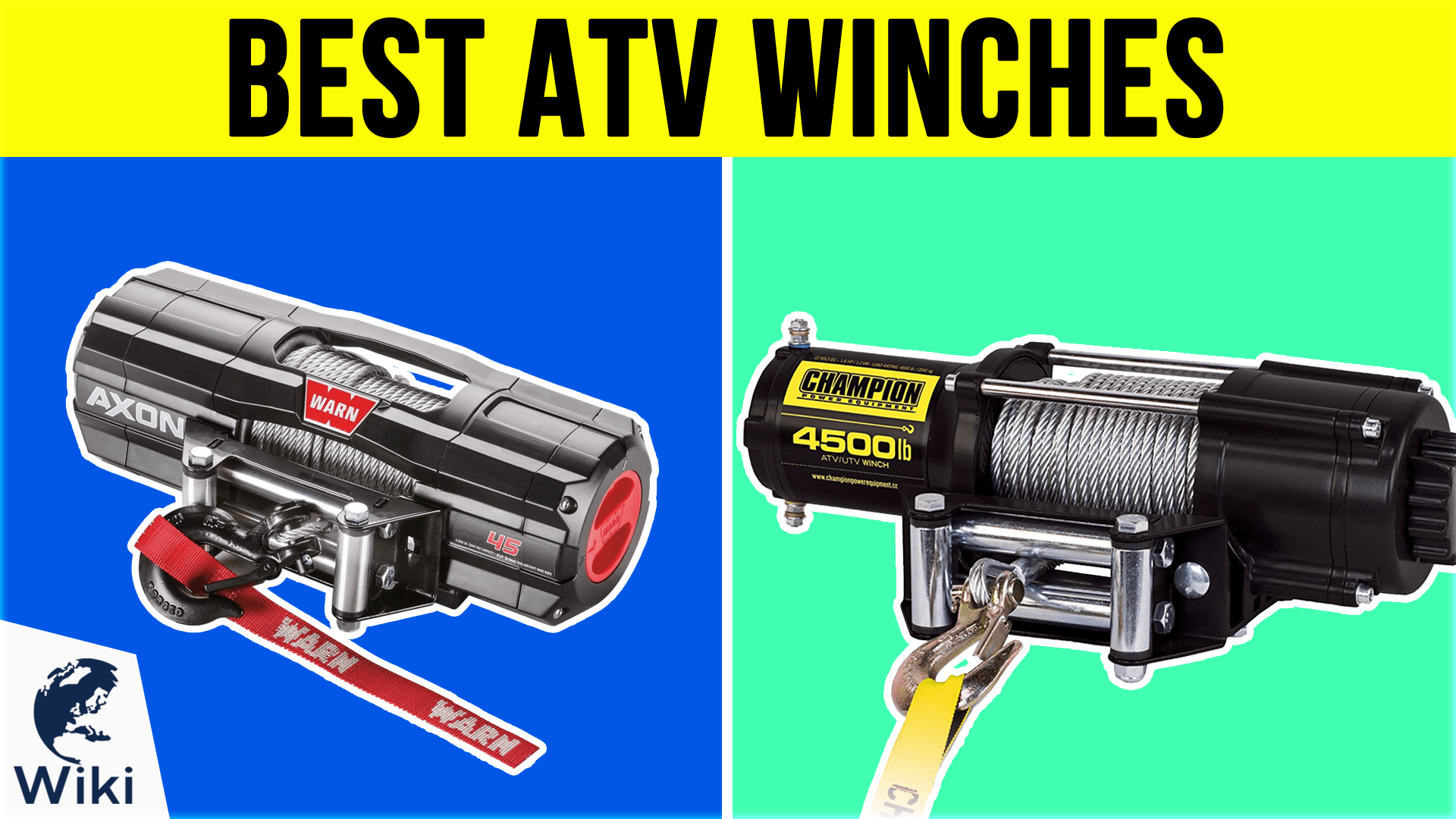 If you pull the cable to the side, it will break. It also needs to be pulled parallel to the ground, as attaching it higher or lower will increase the load.
If you pull the cable to the side, it will break. It also needs to be pulled parallel to the ground, as attaching it higher or lower will increase the load.  In no case should you touch the cable during operation or put your fingers into the drum. If the cable is wound unevenly, you need to stop the winch, unwind it a little and work further.
In no case should you touch the cable during operation or put your fingers into the drum. If the cable is wound unevenly, you need to stop the winch, unwind it a little and work further. Important!
When working with a winch, all safety rules specified in the equipment passport must be observed. You must not approach the cable and winch in working condition and allow other people to approach it. It is necessary to use a cable damper, as in the event of a break, it can damage people and objects around.
Before use, you need to make sure that all elements are in working condition, that they do not have breaks or damage, and that all fasteners are fixed sufficiently securely.
After using the winch, it must be cleaned of dirt, dried and lubricated with special oil.
A winch is a must have when traveling off-road. It allows you to pull a stuck ATV out of mud, water or deep ruts. Many models of CFMOTO ATVs and ATVs have a winch from the factory, for others it needs to be purchased separately.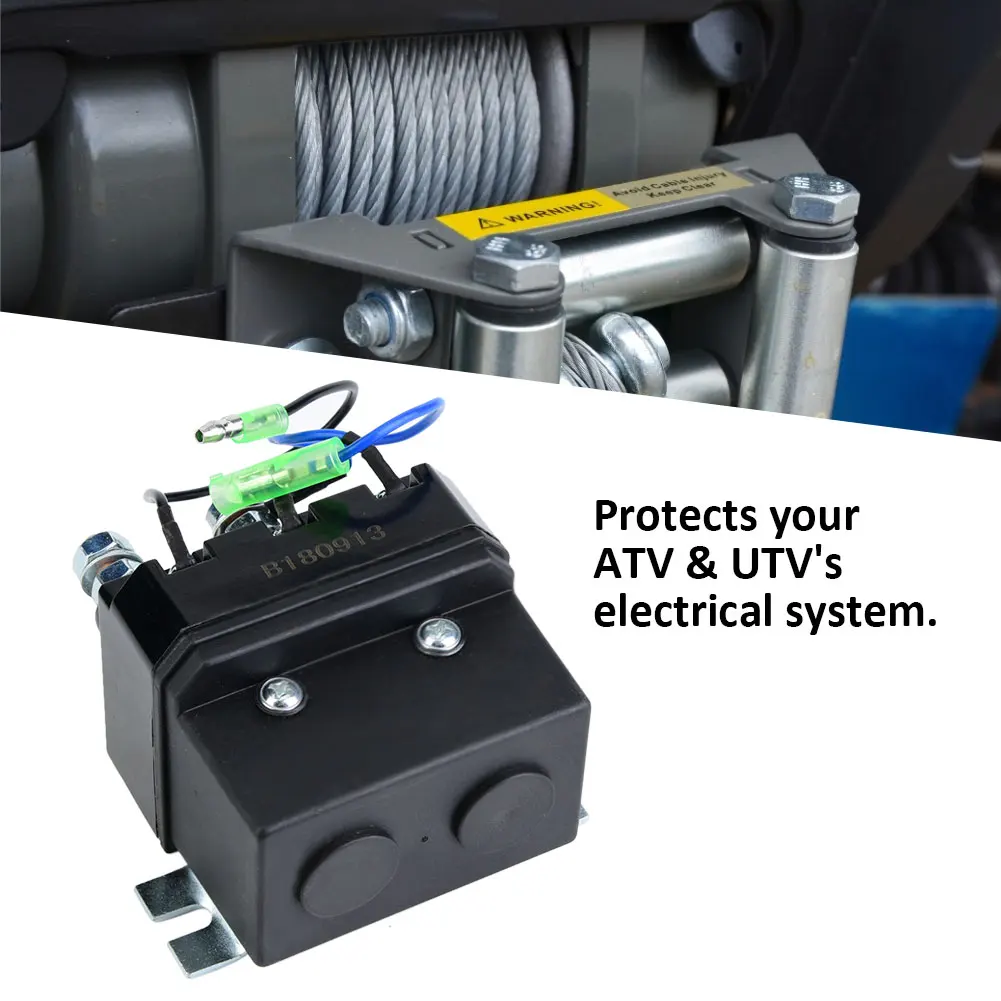 In this article, we will tell you how the winch works, what to look for when choosing, and also give useful tips on how to use it.
In this article, we will tell you how the winch works, what to look for when choosing, and also give useful tips on how to use it.
The ATV winch is a drum with a cable. An electric motor is located on one side of the drum, and a gearbox on the other. Rotation from the electric motor to the gearbox transmits a shaft that passes inside the drum. The gears of the planetary mechanism are located in the gearbox.
Reducer reduces speed and increases traction. The rotation from the gearbox is transmitted to the drum, which winds the cable, creating traction and gradually pulling out the stuck equipment.
One of the key parameters to consider when choosing a winch is traction. It determines the maximum weight of the load that can be torn off the surface. With each skein of the drum, the winch force decreases.
Thrust is measured in pounds (labeled on winches as lbs), 1 lb = 0.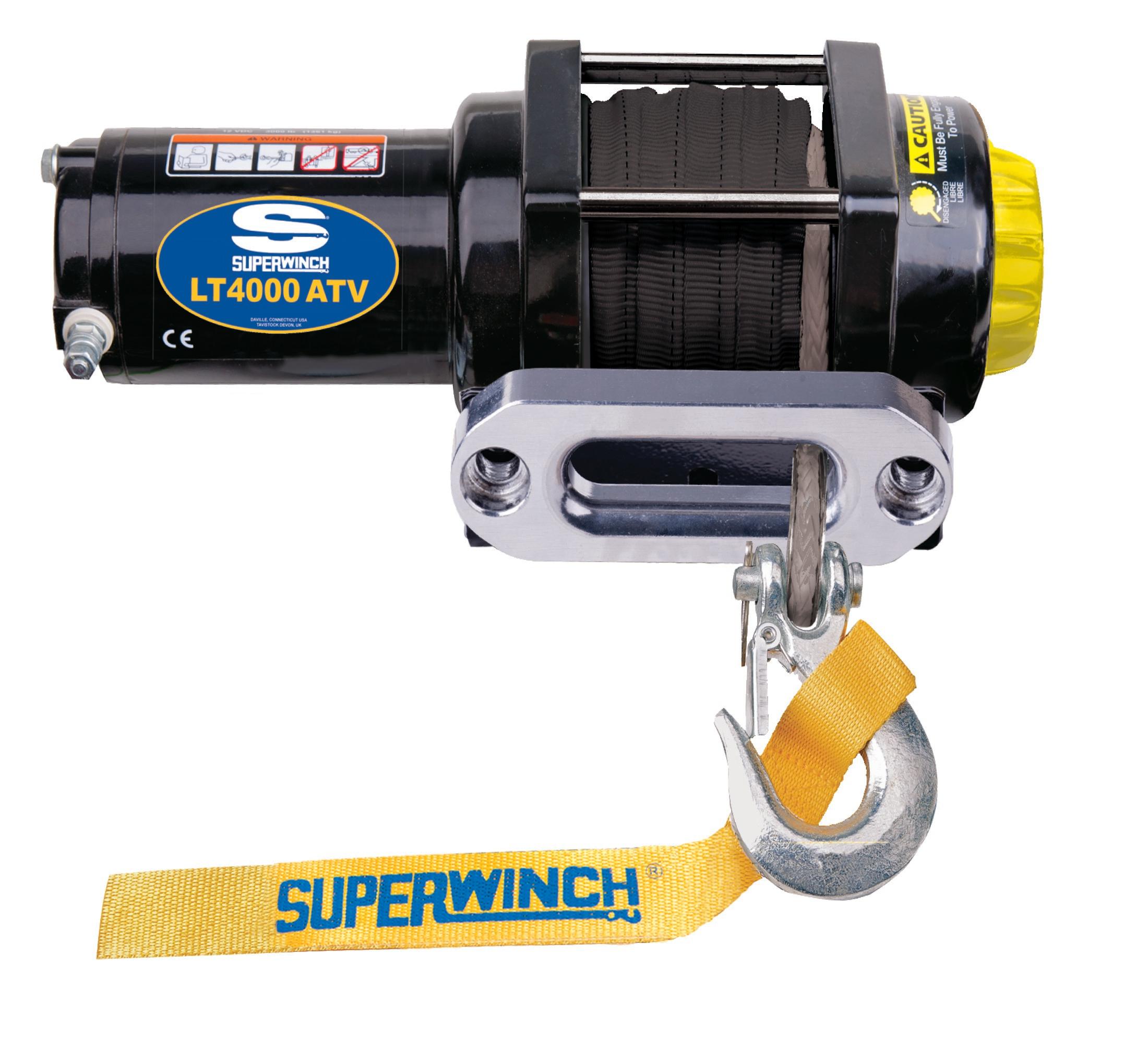 45 kg. The force depends on a number of features: the diameter of the drum, the number of wound turns, the power of the electric motor, as well as the gear ratio of the gearbox.
45 kg. The force depends on a number of features: the diameter of the drum, the number of wound turns, the power of the electric motor, as well as the gear ratio of the gearbox.
It is not always necessary to choose the most powerful and fastest winch: the more powerful the mechanism, the more difficult it is to handle. Beginners can harm equipment and even their health - it is not uncommon for a broken cable or a broken hook to cause injury.
Suitable for ATV cubic capacity:
Steel - cheap and easy. Requires work with gloves, not repairable. May cause injury if mishandled.
Synthetic - requires maintenance but is easy to use.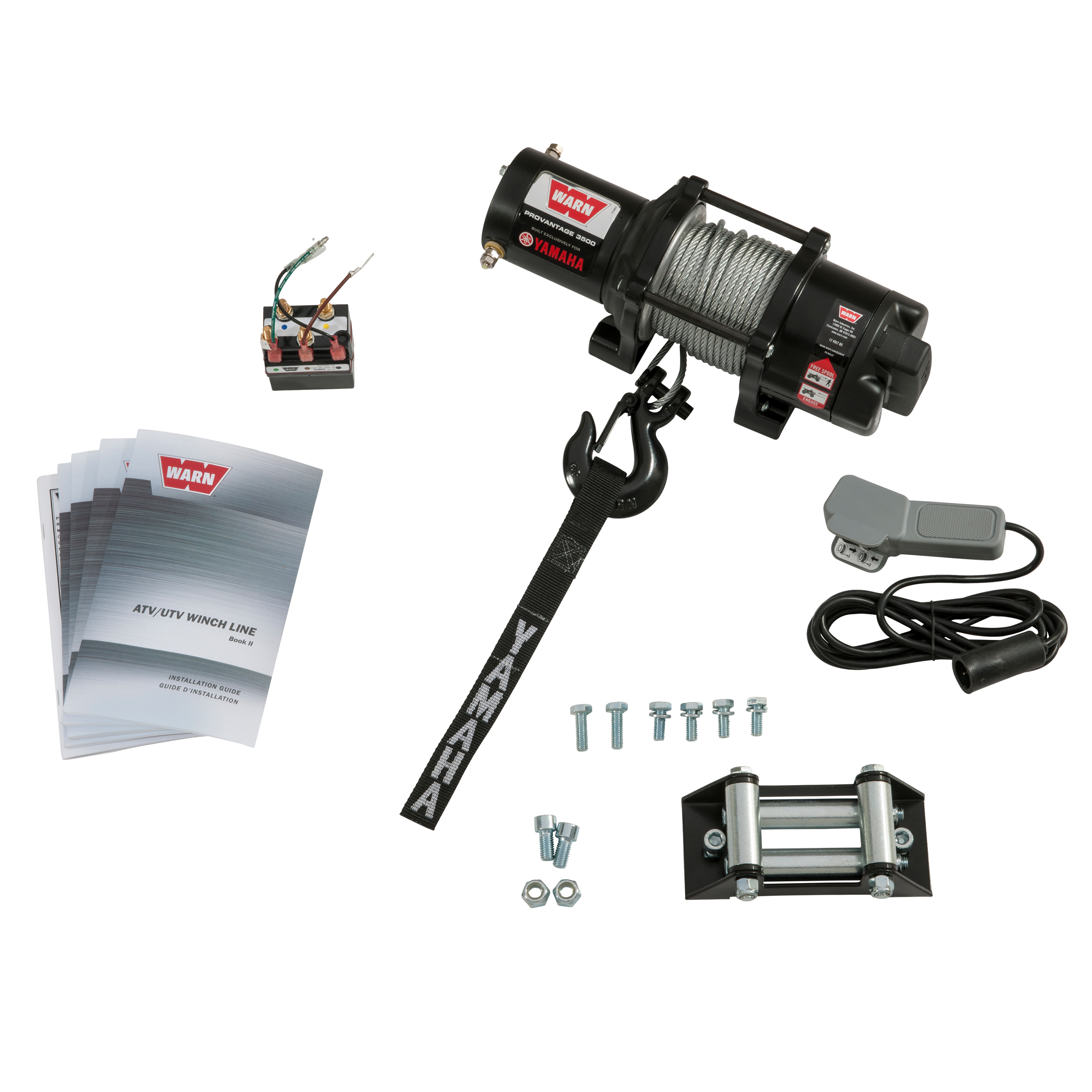 It does not "shoot", and if the cable is damaged or torn, it can be braided on the spot.
It does not "shoot", and if the cable is damaged or torn, it can be braided on the spot.
Most experts believe that material selection should be based on personal preference, with some riders leaning towards steel over time, others towards synthetics.
The winch is installed on a special platform on the ATV frame. If there is no platform, you need to buy it and install it according to the instructions. The site has standard anchor points that fit classic winches up to 3,500 feet of pull.
When choosing a winch, pay attention to the width of the drum:
With certain skills, you can modify the fasteners and install almost any winch - the main thing is not to make the fasteners "break" and not to strengthen weak points. If the ATV is under warranty, it is advisable not to touch the frame and buy a standard winch.
If the ATV is under warranty, it is advisable not to touch the frame and buy a standard winch.
Installing the winch is easy, but the connection will have to be tricky. To lay the wiring, it is advisable to remove the plastic from the ATV. The winch must be connected to the control unit and battery. It is recommended to keep the power cable as short as possible to avoid current loss. All wires must be hidden in the corrugation so that they do not come into contact with the frame and are protected from moisture.
 The attachment point should be as far away as possible - this will create a larger shoulder and increase traction.
The attachment point should be as far away as possible - this will create a larger shoulder and increase traction.
